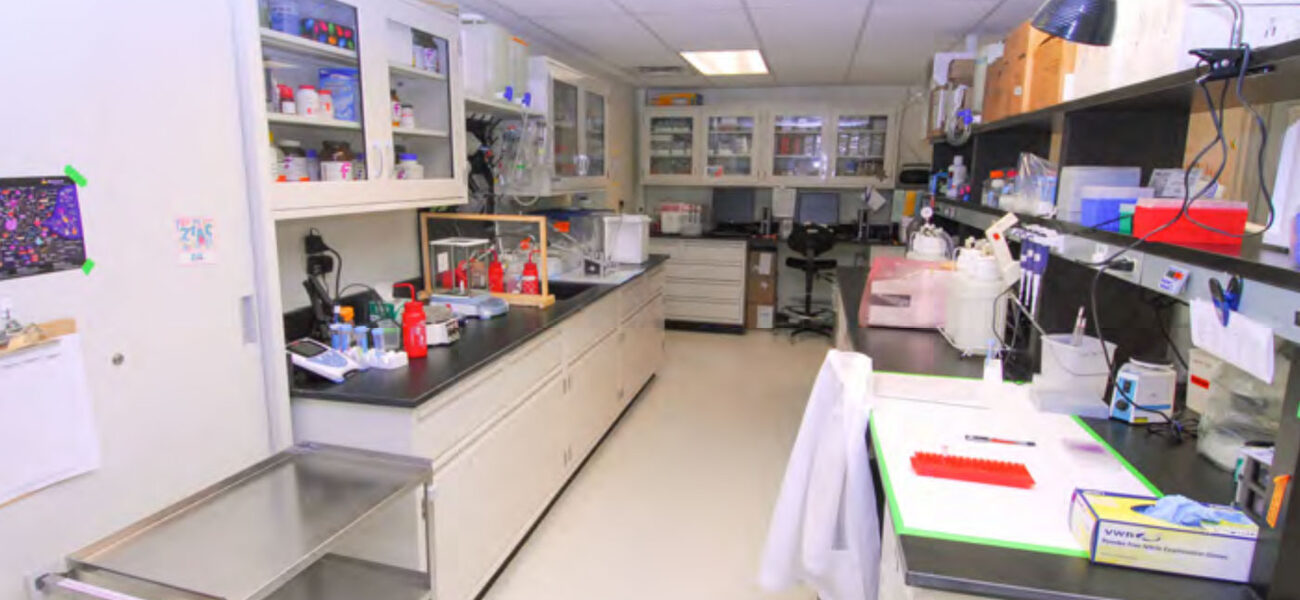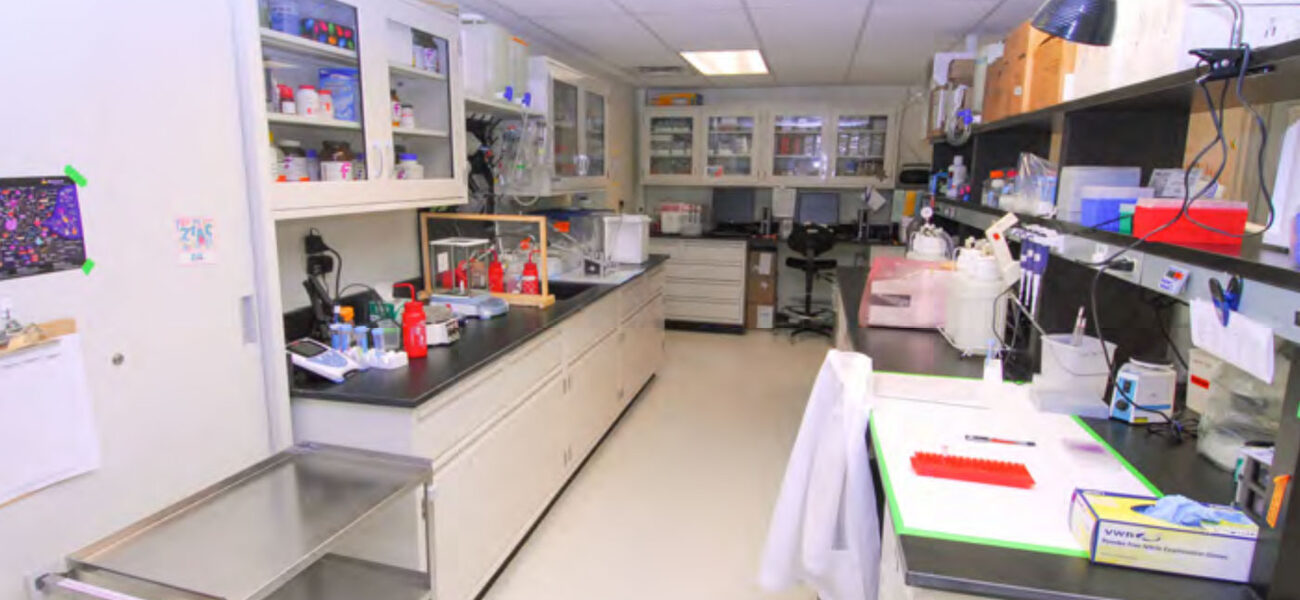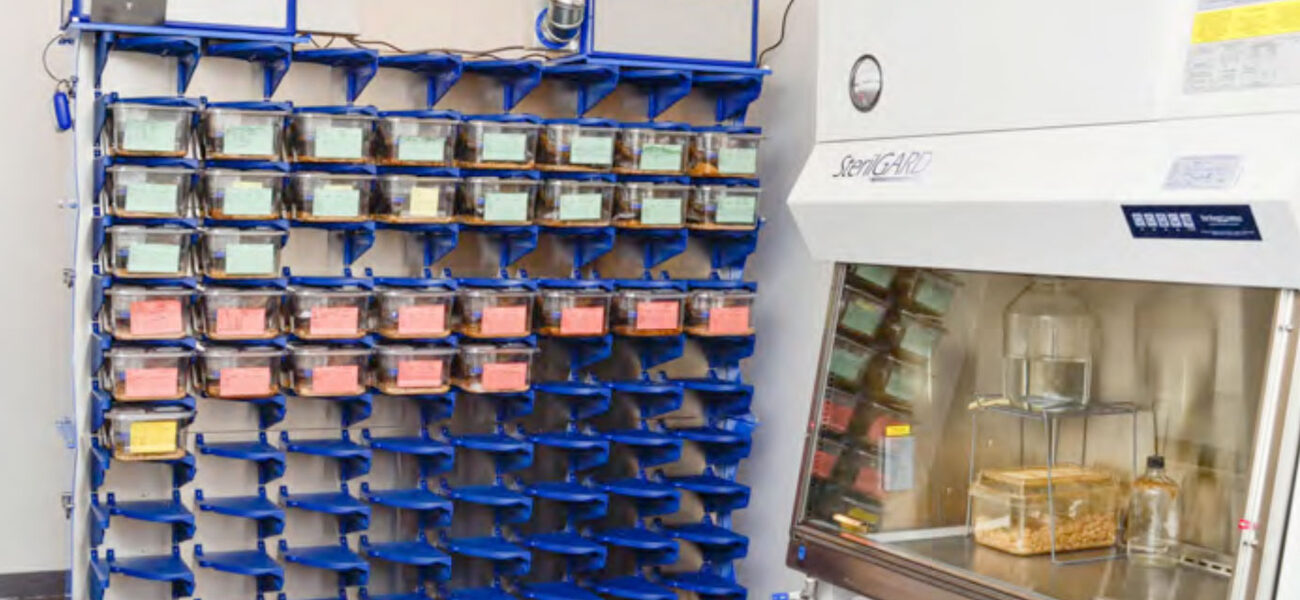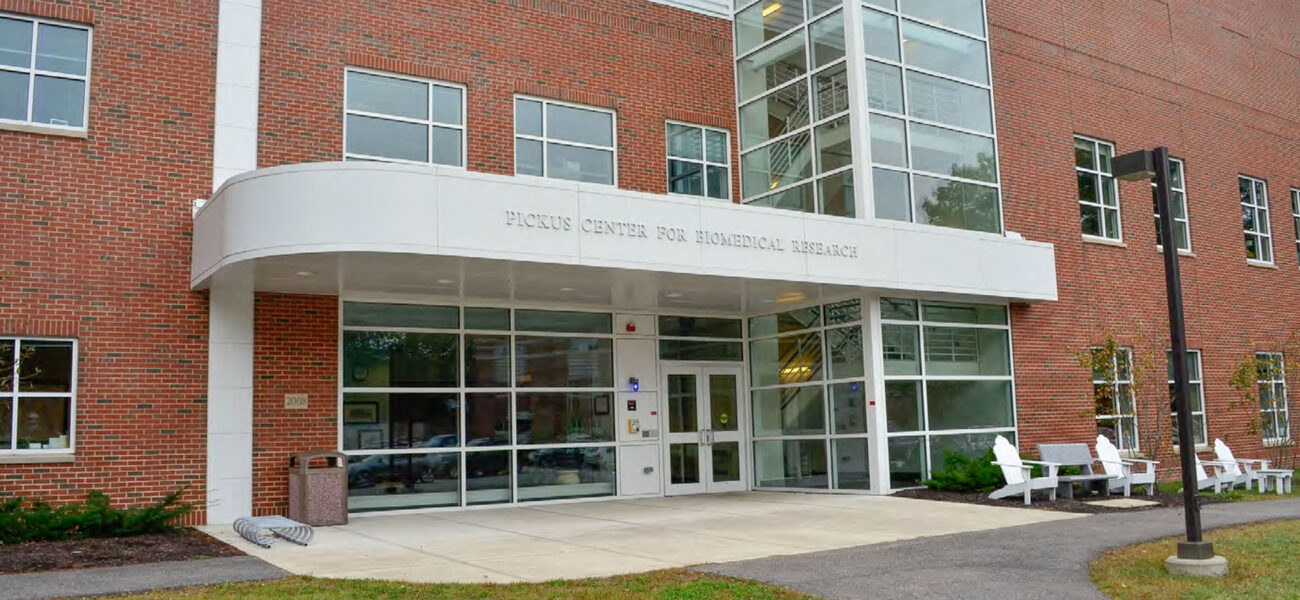Although relatively small in size compared to more established research institutions, the University of New England (UNE) is making tremendous strides in growing its research and scholarship programs and infrastructure despite a shrinking pool of available grant funding. The private university, founded in 1978, began focusing its expansion efforts on biomedical research only within the past decade. In that brief time, the university has increased its level of external funding more than 15-fold while generating a half-dozen patents and several start-up companies, and building partnerships with biotechnology companies. As part of its strategic plan, it has also established five Centers of Excellence that break traditional silos of departments, colleges, and disciplines.
A variety of factors have contributed to the rapid success of the research and scholarship programs, but topping the list are the support of the entire university community and a resourcefulness that enables UNE to do more with less. Strong leadership that has put the university on a more solid financial footing, combined with an attitude the university president refers to as “discipline with direction,” have helped UNE establish a vision and methodically work to achieve its goals, explains Ed Bilsky, the founding director of the University’s Center of Excellence in the Neurosciences and associate provost for research and scholarship.
“We not only have a well-thought-out plan, but also take a disciplined approach to every investment we make so we don’t waste money and resources,” he notes. “Having all stakeholders share in the investments and benefit together when an initiative is successful has been a formula for success.”
Located on the scenic Maine coast with campuses in Biddeford and Portland, UNE was created when St. Francis College merged with New England College of Osteopathic Medicine, the state’s only medical school. The first president gave the university the regional moniker, accurately predicting the institution would grow into the name.
Initially, the Biddeford campus housed the College of Osteopathic Medicine (COM) and the College of Arts and Sciences (CAS). In 1996, UNE merged with Westbrook College of Health Professions and in 2009 added a College of Pharmacy. A new College of Dental Medicine is slated to open in fall 2013, and the medical school is expanding to meet increased demands for primary care physicians.
“We have all these health professionals under the university umbrella, but we remain agile and mobile as a private university without a lot of established silos,” says Bilsky. “From the beginning we wanted our research and scholarship efforts to be student-centered. We have resources typically not available in a stand-alone college, including a greater depth and breadth of faculty expertise, equipment, and core facilities needed to conduct cutting-edge research. We engage students at all levels in research and scholarship.”
Today, UNE enrolls about 8,000 students—a number that has doubled over the past 10 years—and educates more Maine students in the health professions than any other state institution. Operating revenue has nearly doubled in the past five years, and, thanks to leadership that has increased assets and research funding, UNE has multiplied its research space by 69 percent since 2007.
The University’s Composite Financial Index (CFI) as of 2011 was a 4.2. This benchmark of an institution’s financial health looks at factors like reserves, net income, and return on net assets to determine the CFI score, with a 3 or above considered financially healthy and sustainable.
Growing the Biomedical Research Program
The vision to expand biomedical research came from a COM dean who realized the osteopathic profession had to embrace some of allopathic medicine’s thinking, especially the importance of biomedical research, notes Bilsky.
“One of his ideas was to attract an experienced National Institutes of Health (NIH) researcher to help form policies, procedures, and infrastructure that would allow other faculty to start their own programs.”
Without a large start-up package to offer, it attracted a researcher with ties to Maine thanks to intangibles like location and a creative financial incentive: UNE offered a percentage of the indirects the researcher generated on her NIH grants. Indirects are a part of grant funding allocated for costs of conducting research, such as lighting, heating/cooling, and research space. These resources normally are controlled by university administrators, explains Bilsky.
“We didn’t have money like a larger university to invest up front, but if a researcher had her own grants when she came here, we offered to give 25 percent back,” he says. “It’s better than a one-time start-up package because this incentive attracts and rewards ongoing productivity. The more grants generated, the more the university gets in indirects. It passes along a share of those to researchers so that they can make investment decisions in how best to advance their own program. What is interesting is that many of the researchers use these funds to help build collaborations with other faculty who are trying to get their research off the ground.”
The first NIH-funded researcher was brought on in 1998, with two more—including Bilsky—joining UNE over the next few years.
Establishing a Step-by-Step Process
The next step was to invite the American Association for the Advancement of Science (AAAS) to examine UNE’s programs and recommend a plan to achieve goals. The 2002 AAAS report included more than 20 recommendations, which UNE took to heart: The university has since completed about 90 percent of the checklist, says Bilsky. The broad participation and buy-in from faculty, administrators, and board members helped ensure that the roadmap was followed, he adds.
- The recommendations included:
- Recruit and retain faculty who are highly competent researchers.
- Form a research committee or subcommittee to address issues pertaining to the university’s emerging research mission.
- Consider adding one or more preeminent research scientists to the Board of Trustees.
- Immediately appoint a full-time grants and contracts officer.
- Leadership should continually communicate the vision to the entire UNE community.
- Develop strategic plans for COM and CAS and encourage collaboration between the two schools at all levels.
“The AAAS report allowed us to get off the ground. Many of the recommendations didn’t cost a lot of upfront money,” says Bilsky. “For example, getting our Board of Trustees’ support and having a research and scholarship subcommittee cost nothing other than time, but we built trust and worked on projects together as a community.”
For recommendations that did cost money, UNE took a multi-step approach. One of the first items necessary to launch the university’s vision was a formal office of sponsored programs, which eventually became part of the larger Office of Research and Scholarship now overseen by Bilsky.
The office oversees all external grant submissions, helps prepare applications, and makes sure all research programs and facilities are compliant with pertinent regulations. On the scholarship side, the office promotes UNE’s goals across five colleges, two campuses, and dozens of disciplines. The office has a budget to invest in seed projects and initiatives such as the Centers of Excellence, which are designed to encourage collaboration among disciplines toward a common goal, such as advancing the neurosciences.
“The office is about communication, recognizing opportunities, and bringing people together,” explains Bilsky. “The things that grew out of this first initiative have benefited all of the UNE colleges.”
Expanding the Infrastructure
To achieve its vision, UNE had to invest in infrastructure improvements. The medical school started in a former farmhouse and orphanage that was converted and expanded in 1978; equipment was cobbled together from local colleges that were going under, and anatomy tables were handmade by the faculty members.
Thanks to a donation from a Maine philanthropist, the Alfond Health Sciences Center opened in the 1990s, allowing the university to expand its medical school and provide additional biomedical research space and teaching laboratories for the undergraduate college. Having a new center opened up space in the older facility, known as Stella Maris, so UNE began renovating underutilized classrooms to add laboratories. First, they added an animal facility in the basement and then a series of labs on the second and third floors. Although the $75,000 renovation was relatively inexpensive, it had huge implications, says Bilsky.
“We would not have attracted (researcher) Ian Meng here. He eventually became the principal investigator of a recently awarded $10 million NIH grant.”
Stella Maris houses mostly neuroscience labs and offices. Each floor is different, but has about 3,000 sf of usable space divided among eight to 10 labs and an office or two. Neuroscience researchers prefer flexible, individual rooms where sound can be isolated and it’s easy to move the animals in and out, says Bilsky. The university soon will start renovating the fourth floor into neuroscience labs. A $500,000 NIH grant will enable UNE to gut the old labs, upgrade electrical and HVAC systems, lay down a new seamless floor, and purchase an autoclave.
Even with the renovations, UNE was running out of room and needed additional research space, says Bilsky. Around 2003, they started talking about a new building.
“It was going to be the first building on campus that was dedicated solely to biomedical research and not have classrooms in it,” says Bilsky.
The modest $6 million budget was cobbled together through philanthropy, fundraising, and competitive state grants, but raising the money was a struggle, he adds, and resulted in cost-cutting that hindered some of the building’s efficiencies. A proposed animal facility was initially left as open shell space.
“We had to retrofit some things, as well, which ended up in the long run costing more. But it was the financial reality at the time.”
In 2008, UNE opened the Pickus Biomedical Research Building, a three-story 25,000 sf facility. The modern design includes six office suites per floor, conference rooms and gathering spaces, as well as larger open labs for molecular biology. The building more than doubled UNE’s biomedical research space.
“We designed the facility so that if we need to grow we are able to expand and tie into our overall master plan for the university,” says Bilsky.
Because they had to delay the animal facility but had many animal researchers, UNE adopted a model to share lab space.The first floor contains core facilities for imaging, histology, and molecular biology shared by about six investigators. There is also a common space with a small kitchenette where students and faculty congregate. The mixed function labs are basic so they can be shared efficiently.
The second floor space has two conference rooms (although they later realized only one was needed), a human performance lab for applied exercise sciences that was retrofitted, along with a gross anatomy studio and additional behavioral testing rooms.
The third-floor shell was reserved for the animal facility, and UNE eventually secured $1.5 million in state funding to complete the project. UNE works a lot with Maine-based companies to help them advance their technology, and the state is supportive because its researchers generate patents and spin-off companies, says Bilsky. Also, Maine is considered an “IDeA eligible state”—one that is behind other states in research grants—so the NIH and other federal grant programs provide money for infrastructure improvements.
One cost saver was a disposable cage system. This is a novel way of providing cost-effective rodent housing, which was met with significant skepticism by the investigators.
“We didn’t have to make the large up-front investment in the cage-washing system and we also eliminated the substantial ongoing costs of such a system,” explains Bilsky. The space savings also allowed the group to add a large procedure room that could be converted easily into another holding room when phase II of the building is realized.
“In the long run, it was a more efficient system for us.”
Onward and Upward
In just 10 years, UNE’s research and scholarship program has gone from just a handful of funded investigators to a vibrant educational and research group that is effectively competing for major federal and state grants. The university has garnered more than $11 million in research and scholarship awards this past fiscal year, and projects it will surpass $15 million annually by the end of its current fiscal year. The funding is distributed across all of UNE’s colleges, adds Bilsky.
A second phase of the biomedical research building is in the planning stage, and a dozen more infrastructure improvements, including new dorms and a sports arena, are recently completed or under way.
The University has been able to move forward in leaps and bounds by adhering to the following principles, says Bilsky:
- Develop a well-thought-out strategic plan.
- Follow the plan with discipline and direction, but be agile and flexible.
- Engage people at all levels in the planning and implementation process.
- Utilize good business practices—be creative in your approach to projects, and make sure each stakeholder is invested and shares in the risks and benefits.
UNE’s size and freedom from the traditions and bureaucracies that can slow down established institutions has likely enabled it to be more flexible and innovative, says Bilsky. Having fewer financial resources forces the university to be resourceful and more willing to take chances, he adds.
“I think the overall message of UNE’s success is: If you start at the grass roots and have a clear vision in mind, you can achieve your goals. Our vision was to be student-centered, with our research and scholarship complementing that goal,” concludes Bilsky. “We always ask, ‘Is this the best course of action to achieve our goals?’ If the answer is yes, we find a way to do it.”
By Taitia Shelow
This report was based on a presentation Bilsky gave at the Tradeline 2012 College and University Science Facilities conference.




